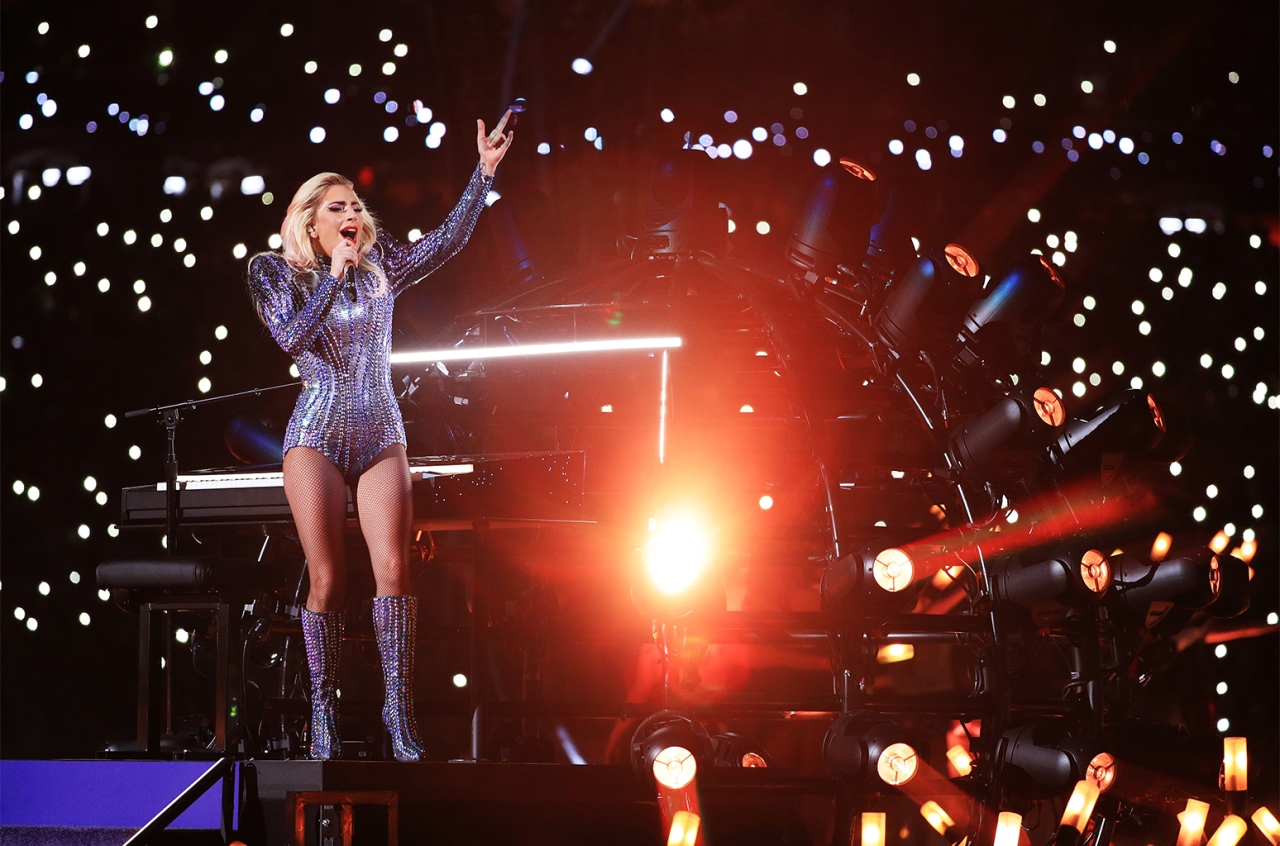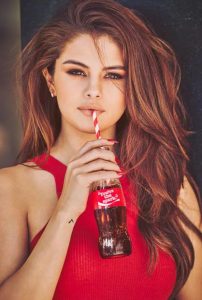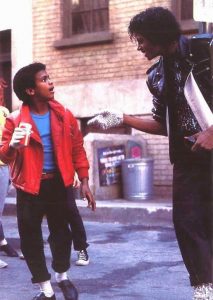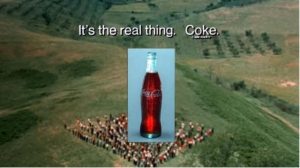
The Cola Wars: that’s how the conflict between Coca-Cola and Pepsi Cola is defined. But how is popular music involved in this process?
Music, as an art form, is undoubtedly a significant part of every individual’s cultural configuration: entire generations express themselves through music and consumers identify with the genres and the artists that they particularly like. Because of popular music’s ability to become an intrinsic and defining element of people’s personalities, brands have soon come to understand that the integration of music into brand communication processes can nothing but enhance brand-consumer relationships.
Therefore, numerous brands strongly rely on their public’s music tastes to improve their targeting activities, and they often reach out to recording artists to set up collaborations. Such artist-brand matches need to be studied and planned in advance in order to convey a sense of consistence and credibility aimed to benefit both the brand’s and the artist’s reputation. So, which aims and objectives do brands and recording artists bear in mind when assessing a potential collaboration?

As for brands, they arguably use music in order to improve brand equity and, consequently, to reach a significant competitive edge in terms of consumer engagement. A further advantage related to the use of known popular songs and artists in advertising is the guarantee that the commercial’s music will be appreciated by most of the audience, because a relevant part the public already knows and approves both the song and the artist. This was the case, for instance, for the successful Italian Coca-Cola 2021 campaign including the hit song Mille, performed by the Italian pop stars Fedez, Achille Lauro and Orietta Berti (which we analyzed in depht in our recent article “Da zero a mille: il Branded Entertainment di Coca-Cola e Fedez“). Lastly, the opportunity to use consumers’ music tastes as a parameter of target segmentation can be considered as another motivation that spurs brands to activate music-related promotional initiatives.
Regarding the artists’ perspective, the first reason that motivates an artist to accept a collaboration with a brand is very simple: money. Music is a business and brand partnerships are an important source of revenue, and this cannot be denied. In 2016, Billboard reported that US$2 billion in the music industries were generated by the branding business, including activities such as music event sponsorships, endorsement deals and licensing[1]. But financial benefits are not the only incentive, for the second main motivation for artists is the opportunity for amplification and promotion connected with the great media exposure provided by brands. Moreover, partnerships with brands allow artists to extend their audience, especially when it comes to brands that have a loyal consumer base: musicians get the chance to reach a public that they may not be able to touch otherwise and, in addition, the partnerships allow for the creation of new touchpoints, i.e. contexts where the artist can be seen by the public. The more touchpoints a singer has, more likely it will be that the public will eventually look for more information about them and listen to them.
In the history of branding and advertising, there are countless examples of brands that integrate music and branding effectively, generating positive impacts on brand differentiation. With no doubt, a case which stands out in a particular way is the one of the ‘Cola Wars’. Such term refers to the “long-standing battle between Coca-Cola and Pepsi-Cola for supremacy in the soft drink market in the 1960s and after”[2].

But what are, in practice, the main music-related initiatives that Pepsi and Coca-Cola have been implementing to compete against one another?
From the very beginning, all Pepsi’s music-related branding initiatives have been orbiting around one fundamental statement: “Pepsi-Cola is for the young”. To convey such message, the brand has partnered with those pop stars who, somehow, are considered to have been disruptive artists who were representative of the youngest generations. Among them we can mention Michael Jackson, Madonna, Britney Spears, Beyoncé and Nicki Minaj. But the testimonial strategy is not the only instrument which has been adopted by Pepsi: sponsorship deals with the biggest national and international music events, such as the Superbowl Halftime Show (also known as the ‘Pepsi Superbowl Halftime Show’), are still a fundamental part of the brand’s music-related marketing strategy.
Moreover, the company has been engaging directly in activities that are typical of the music sector, such as music distribution and bringing new artists to the market. As for the former, a significant example was the 2004 partnership between Pepsi and the iTunes Music Store, which was signed by Apple’s CEO Steve Jobs and Dawn Hudson, who was the president of Pepsi-Cola North America[3]. As for the latter, in 2016 the brand launched “The Sound Drop”, a platform that allows for an amplification of new artists’ visibility on digital media[4].
Regarding Coca-Cola, the brand’s main initiatives can be considered as similar to the one’s adopted by Pepsi. However, whereas Pepsi’s main message is “Pepsi is for the young”, Coca-Cola’s brand communication focuses more on diversity and inclusion. In fact, the 1971 “Hilltop” campaign, which is one of the most successful commercials ever produced by the company, shows a group of multicultural girls and boys singing on the top of a hill. Here, not only is the topic of youthfulness addressed, but also the concepts of counterculture, diversity and inclusivity play a significant part in the message.

However, traditional advertising has not been the only music-related tactic implemented by Coke either. An outstanding example is the 2016 “Share a Coke and a Song” campaign: the initiative consisted in printing famous songs’ lyrics on Coke bottles and included massive social media exposure. Moreover, the international pop star Selena Gomez was involved in the strategy.
Furthermore, Coca-Cola has, too, carried out some initiatives in order to cross paths with the music industry and to support the growth of smaller artists. For example, in 1991 the brand has partnered with Sony Music to distribute mini-CDs to the buyers of Coca-Cola multipacks. As for the support for young artists and multicultural music, the company set up a program called “Coke Studio”. The project consists in a live musical performance TV series that gained popularity especially in eastern countries such as India and Pakistan.
To sum up, Coca-Cola and Pepsi have a long history in exploiting the benefits of the interactions between the music and the advertising world that we mentioned above. Pepsi and Coke, which offer parity products, are very familiar with the high potential that pop music has in the construction of brand equity and brand differentiation. Furthermore, the two competitors have realized that the use of popular music in advertising can be one of the most effective branding strategies to target youth. In fact, popular music has always something to do with youngness, freshness, creativity and modernity: this is the reason why it is a very useful means when it comes to attracting young consumers, and Pepsi and Coca-Cola are well aware of this.
—
[1] Billboard’s 2016 branding power players: Meet the masters of marketing, Billboard.com, 14 March 2016, https://www.billboard.com/articles/business/7256268/2016-billboard-branding-power-list-marketing.
[2] Taylor, Thimothy Dean, The sounds of capitalism. Advertising, music, and the conquest of culture, University of Chicago Press: Chicago; London, 2012, p. 149.
[3] Apple and Pepsi to Give Away 100 Million Free Songs, Apple.com, 16 October 2003, https://www.apple.com/newsroom/2003/10/16Apple-and-Pepsi-to-Give-Away-100-Million-Free-Songs/.
[4] Pepsi Launches The Sound Drop to Identify and Support the Next Generation of Breaking Artists in Partnership with iHeartMedia, Shazam and MTV, Pepsico.com, 24 August 2016, https://www.pepsico.com/news/press-release/pepsi-launches-the-sound-drop-to-identify-and-support-the-next-generation-of-bre08242016.